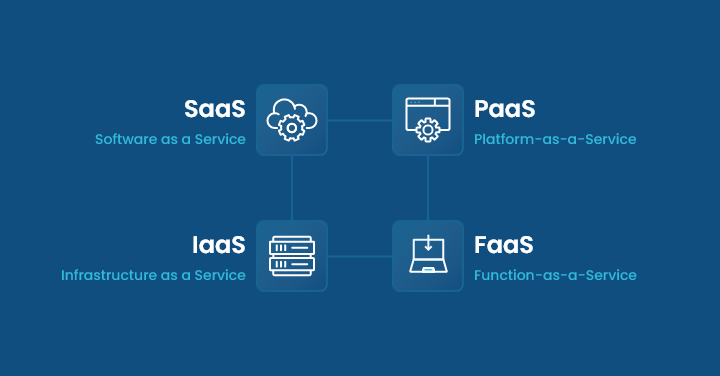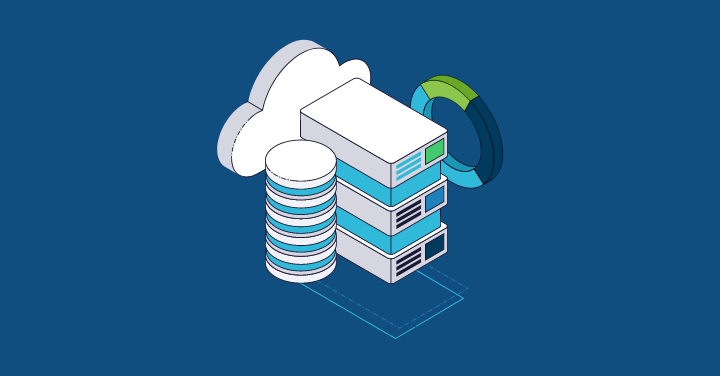Cloud computing adoption has changed the way businesses operate today. This practice has enabled businesses to reduce their operational and unnecessary costs, grow, scale their operations, and accelerate development.
Scalability and Elasticity are the two major concepts that often come into play whenever cloud computing is discussed. Both the concepts may sound similar but differ in approaches.
Let us learn more about elasticity and scalability in cloud computing, their benefits, importance, examples, and use cases.
What is Elasticity?
Elasticity in cloud computing refers to the ability of a system to adjust capacity needs and resources based on the changing demand. It automatically increases or decreases your resource usage, i.e., ensures your resources are neither getting overutilized nor underutilized.
How Does Elasticity Work in Cloud Computing?
Businesses gain access to automatically or manually adjust their capacity levels or resources as per workload changes or rising demand in cloud elasticity. As the workload increases, the system automatically adds new resources to handle the sudden demand.
Also, depending on the workload trend, users can eliminate the extra capacity or unnecessary resources within a few minutes.
Benefits of Elasticity
Make an internal image here:
Some of the main benefits of cloud elasticity are:
1. Agility
You no longer have to purchase or deploy new systems to manage the spike or surge in demand thanks to this approach. It enables businesses to automatically address unforeseen events and demands in real-time, for example, seasonal fluctuations.
2. Efficiency
IT professionals can focus on other important areas of a business by automating changes to cloud resources rather than provisioning.
3. Pay-as-you-go pricing model
This concept is highly flexible, i.e., it allows businesses to only pay for the resources they utilize for a specific period.
Example of Elasticity
Let’s say, you have an e-commerce portal with a regular incoming traffic of 50-100 users per hour. Now, suddenly your team decides to run a sale or offer exciting deals to attract more users.
As a result, there is a sudden spike in the number of users, almost from 100 to 3000 in at the same time. In this condition, if your current infrastructure is capable enough to provide new web servers to manage this demand automatically, your design has an elastic infrastructure.
Use Cases of Elasticity in Cloud Computing
A retail shop often uses cloud elasticity, especially during periods of high seasonal activity. For example, during the festive season when shop owners run special deals or sales, the platform might encounter a sudden spike in demand.
It might be a great time to use an elastic solution rather than a permanent infrastructure capacity to handle the high traffic you encounter each month due to these short sales and offers. Further, since it operates on a pay-as-you-go basis, you can choose to operate with less capacity for normal days.
Even some of the streaming platforms like Netflix can use this approach to manage the excessive traffic often tracked especially during popular releases.
The concept ensures seamless streaming experiences and cost effectiveness by permitting the addition and removal of resources in response to demand.
Another popular use case of this approach is the ticket booking platform. Many people strive to purchase tickets for the first screening of a new film starring a well-known actor when it opens in theatres.
This results in a large number of visitors to the website where tickets are booked, which may cause issues. Purchasing tickets for a train or an airplane during a vacation can also have the same effect. Businesses can employ elastic computing to steer clear of these problems.
Why is Elasticity important in Cloud Computing?
Here’s why elasticity plays a key role in cloud computing:
Maintains Balance Between Performance and Cost:
An elastic cloud provider monitors resource usage and accordingly allocates depending on the demand which saves you from investing in unnecessary underutilized or overutilized resources. Further, it works on the pay-per-use model, i.e., you need to pay only for the resources you use and no more.
Ensures Smooth Service Delivery:
Without this approach, your systems or servers may get overloaded due to a sudden increase in incoming traffic. Hence, having an elastic cloud provider will help ensure flawless service availability and more satisfied customers.
What is Scalability?
Scalability in cloud computing refers to the ability to add or remove resources to manage the workload increase without affecting the overall performance of the system. It is used only to handle the sudden spike in resource usage.
How Does Scalability Work in Cloud Computing?
Scalability in cloud computing works in two different ways, i.e., horizontal and vertical.
Horizontal scaling involves adding more instances and distributing the workload rather than utilizing a large server.
Vertical Scaling, however, involves changing instance sizes or increasing the count or speed of resources, memory, or CPUs.
Benefits of Scalability
Some of the main benefits of this concept are:
1. Cost Efficiency
Businesses can better manage their costs by only paying for the resources they utilize. Additionally, by lowering the requirement for hardware and maintenance teams, cloud scalability assists businesses in cutting their IT expenses.
2. Better Performance
allows businesses to add resources instantly in response to growing demands which further aids in improving performance and maintaining user experience
3. Increased Flexibility
Businesses may quickly adapt their resources to the changing needs of their customers and stand out from competitors
Example of Scalability
Cloud scalability is best used in call centers. As more employees join the company and the customer request increases, the call centers look for a scalable application infrastructure.
Thus, in order to guarantee steady growth and exceptional performance, enterprises must implement new server functionalities. Similarly, social media platforms can use this approach to manage the increasing user count for seamless performance.
Use Cases of Scalability in Cloud Computing
One of the best use cases for this concept is Amazon Web Services (AWS) and Google Cloud Platform. AWS provides several managed services, such as Amazon EC2, Amazon S3, and Amazon RDS, that can help with scalability.
Cloud systems can effectively handle workload fluctuations, analyze data, and offer a dependable service to users by scaling their resources.
Platforms for financial trading must be highly scalable in order to handle huge numbers of transactions in real-time, particularly when there is volatility in the market.
Why is Scalability important in Cloud Computing?
Here’s why scalability plays a key role in cloud computing:
Reliability: Based on scalable architecture’s capacity to adapt to sudden fluctuations in demand, organizations can be sure they will experience good performance.
Improve Power: Instead of worrying about not having enough processing power or storage, businesses can concentrate on their core operations thanks to their ability to add or remove resources as needed.
Differentiating Elasticity and Scalability in Cloud Computing
Elasticity and Scalability in Cloud Computing might seem similar but vary in their approaches. Here are some of the key factors that differentiate Elasticity and Scalability in Cloud Computing:
Proactive vs Reactive
Scalability can be both proactive as well as active, however, elasticity is always reactive. For example, a business might choose to be proactive by investing in more resources in advance if it anticipates growth in the future.
However, it would choose reactive if there is an unexpected rise in demand necessitating the addition of resources.
Horizontal vs Vertical
Horizontal scaling, which is the center of scalability, involves adding more servers to the system. On the other hand, elasticity vertically scales by increasing the potential of already-existing resources.
Short-term vs Long-term planning
Elasticity involves short-term planning, i.e., only to deal with seasonal demands. However, scalability involves long-term planning just to deal with an expected increase in demand.
Cost Optimization Benefits
Elasticity offers significant cost savings over manual or proactive resource scaling because it controls resource allocation and eliminates unnecessary resources
Dependency
Scalability can occur without elasticity, however, in the case of elasticity, you might require scalability.
Challenges and Solutions in Achieving Elasticity and Scalability
The two concepts come with a wide range of benefits, but both Elasticity and Scalability in Cloud Computing are challenging in some cases:
For Elasticity:
Resource Availability: To take full advantage of this concept, organizations must modify their existing configurations which require technical experts. This may result in delays as the new technical experts might need some time to adjust to new settings and procedures.
Security Impact: Your existing security procedures might be affected by expanding or contracting cloud services. In short, it could be challenging to react swiftly to an incident in elastic systems due to their transient nature.
Vendor Lock-In: The Cloud Elasticity solution is provided by all of the leading public cloud providers. However, due to differing architectures, companies can only collaborate with a single provider for their cloud requirements.
For Scalability
Complexity: System complexity may impede scalability in large businesses with extensive infrastructures.
Interoperability: Businesses that rely on several cloud providers may find it difficult to accommodate the varying scalability strategies used by these providers.
Service Disruptions: Systems’ performance may suffer if they are not optimized for this approach.
Security: Scaling and shifting workloads may make an organization more susceptible to cyber security breaches.
Best Practices for Implementing Elasticity and Scalability
Implementing Elasticity and Scalability in Cloud Computing can be advantageous in most cases. But here are a few best practices that one must follow when using Elasticity and Scalability in cloud computing:
For Elasticity:
Auto-scaling: Set up auto-scaling groups so that the number of instances can be dynamically changed in response to traffic patterns. With this dynamic strategy, instances are added or removed as needed, ensuring that the system can manage variable loads efficiently. To further optimize this procedure, set up threshold-based scaling.
Monitoring and Alert: Implement monitoring solutions that monitor the health and performance of your applications in real time as well as send alerts on exceeding threshold limits.
Cost Management: Monitors resource consumption and uses spot instances to avoid over-provisioning and reduce costs.
Testing: Run load tests from time to time to understand the loopholes in your system and ensure that it is capable of handling peak loads or when there is a change in the demand.
For Scalability:
Design for Scaling Purpose: Make sure to choose a microservices architecture and horizontal scaling type for easy and independent scaling of application components
Load Balancing: Try to use load balancers to distribute the workload amid different servers and prevent failure or downtime. Further, keep a constant check on the health status for better performance delivery
Database Scalability: Use replication or sharing techniques to manage the load. Further, for scalable storage solutions, try to invest in NoSQL databases
Caching: Use caching solutions to reduce the workload on servers and databases. Use this practice at different levels to save time and deliver better customer experience
Elasticity Vs. Scalability in Cloud Computing: Which Should You Choose?
In cloud computing, the decision between scalability and elasticity mostly comes down to the unique needs and circumstances of your business. Both have distinct benefits and can greatly improve your computing power, but make sure to choose after going through different factors.
Here is a quick overview of both options that will make the process of determining easier for you.
Scalability is a great solution for businesses that often encounter high-demand periods. With this approach, you can proactively increase resource utilization based on increasing demand.
Further, it is a perfect solution for the long-term. But remember this practice may result in underutilization of resources during times of low demand, raising overall expenses.
Elasticity, on the other hand, is a great solution for any business that often undergoes unpredictable demand patterns. Using this approach, businesses can adjust their available resources to the changing demands in real-time.
Additionally, users can benefit greatly from its cost-effectiveness and elimination of manual intervention. However, to guarantee flawless operation, a strong monitoring and management system is needed.
Future Trends in Elasticity and Scalability in Cloud Computing
Here are some of the future trends that you might encounter in elasticity and scalability in cloud computing:
Increased Automation
Systems are getting smart enough to handle resource allocation with little assistance from humans, therefore automation in terms of scalability and elasticity is set to increase.
Edge Computing
Edge computing lowers latency and boosts speed by processing data close to the data source. How elasticity and scalability in cloud computing are handled might be completely changed by it.
Serverless Computing
With the help of this trend, managing servers is no longer necessary, enabling businesses to operate services and apps without worrying about the underlying cloud infrastructure.
AI and Machine Learning
These two techniques are expected to play an important role in predicting demand patterns and optimizing resource allocation.
Security Enhancements
To keep up with the complexity of cloud architecture, security measures must grow and change with the systems they guard.
Containerization
One of the most important tools for scalability is containers because of their great high portability across machines. Additionally, because they can be quickly spun up or down to meet needs, they facilitate elasticity.
Multicloud Strategies
Scalability and elasticity in cloud computing can be improved by utilizing various cloud providers since it gives you greater options and prevents vendor lock-in.
Take Advantage of Scalability and Elasticity with Motadata
In cloud computing, both scalability and elasticity approaches play an important role. On one hand, where businesses use scalability to manage increasing workload by allocating resources, elasticity is a wider approach that supports auto-scaling based on the changing demand.
Scalability is necessary to support expansion and guarantee optimal performance, whereas elasticity offers cost-effectiveness and flexibility.
Both Elasticity and Scalability in cloud computing may sound similar but differ in many ways. Follow the above-mentioned points of difference to determine which one is best suitable for your business.
Each has its own importance, benefits, and use cases. Compare the two based on different factors and assess your needs before making the final call.
You can also partner with Motadata to take maximum advantage of Elasticity and Scalability in the cloud computing environment. They offer unified observability, real-time monitoring solutions, AI and machine learning techniques, and more features that can make it easier for you to analyze and manage resource allocations.
In short, you may leverage the advantages of Elasticity and Scalability in cloud computing and attain the best possible outcomes with their assistance and all-inclusive solutions.
FAQs
Both Elasticity and scalability in cloud computing are beneficial in terms of cost-effectiveness. You may scale resources according to demand thanks to elasticity, which might help you save money when demand is low.
When there is high demand, scalability allows you to increase resources as needed. The best solution is to combine both.
With serverless computing, businesses can run all the applications and automate resource allocation without worrying about maintaining infrastructure, which improves scalability and elasticity in cloud computing. As a result, developers can concentrate on writing codes and other important areas.
With the help of artificial intelligence (AI) and Machine learning practices, businesses can track usage patterns, analyze and predict demands in real-time, better allocate resources, and automate the overall scaling process.
These practices further aid in improving the efficiency level, and performance, and reduce errors leading to enhanced user experience.
This concept is majorly used when there is a sudden surge or fluctuations in demand. For example, e-commerce businesses when they run sales or when media partners run live events.
With this practice, businesses can better manage the incoming workload and enhance performance.






